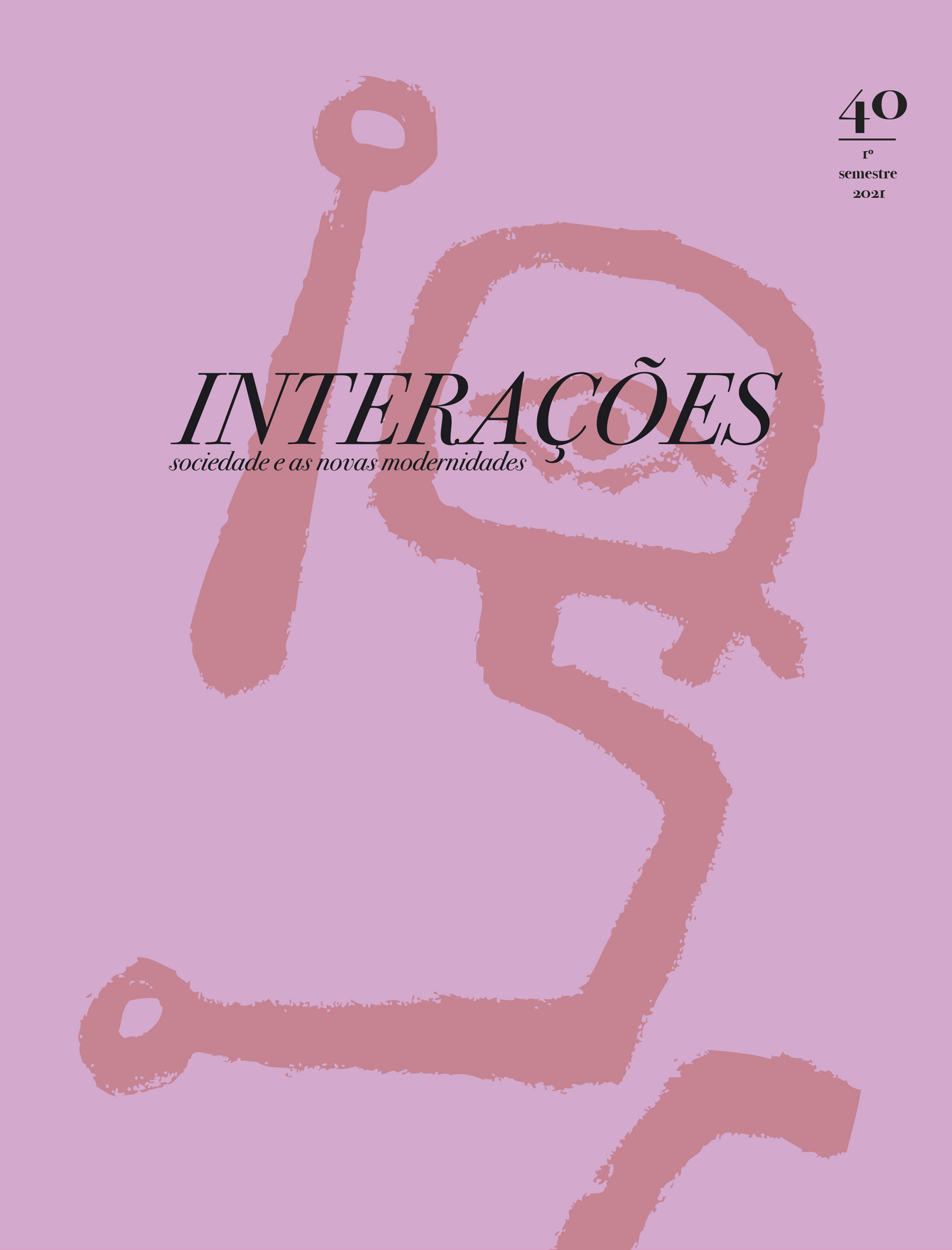Learning from Lisbon Or, how postmodernism conquered Portugal
DOI:
https://doi.org/10.31211/interacoes.n40.2021.a5Palabras clave:
Postmodernism, Architecture, Urban history, Lisbon, PortugalResumen
El centro comercial Amoreiras en Lisboa es un icono de la posmodernidad portuguesa. Cuando abrió por primera vez en 1985, su diseño kitsch se destacó de manera notable en medio de un paisaje de elegantes calles comerciales Pombalinas, edificios de viviendas sociales y casas para turistas revestidas con "azulejos tradicionales". Pero también reflejó un momento crucial en la historia portuguesa y aún hoy se mantiene como un recordatorio de las aspiraciones consumistas del Portugal posrevolucionario, las políticas neoliberales que han llegado a dominar la vida en muchas naciones occidentales y las crudas contradicciones del capitalismo global. Partiendo de una discusión inicial sobre Amoreiras, este breve ensayo explora críticamente las transformaciones recientes en el paisaje urbano y arquitectónico de Lisboa y rastrea sus orígenes políticos y económicos. Al hacerlo, sugiere formas en las que el posmodernismo podría considerarse un concepto relevante para describir la sociedad portuguesa contemporánea.
Descargas
Citas
Amoreiras Shopping Center. (n.d.). About. Retrieved October 1, 2020, from https://amoreiras.com/en/about
Baklanoff, E. N. (1992). The Political Economy of Portugal’s Later “Estado Novo”: A Critique of the Stagnation Thesis. Luso-Brazilian Review, 29 (1), 1–17.
Broadbent, G. (1990). Introduction. In Tomás Taveira. Academy Press/St. Martin’s Press.
Cardim, J. (2013). The role of shopping malls in shaping the Lisbon Metropolitan Area: The Amoreiras Shopping Center case study. Revista Lusófona de Arquitectura e Educação, 8–9, 145–169.
Carvalho, R. A. (2018). Ideology and architecture in the Portuguese “Estado Novo”: Cultural innovation within a para-fascist state (1932–1945). Fascism, 7, 141–174. https://doi.org/10.1163/22116257-00702002
Castells, M. (1977). The urban question: a Marxist approach. Edward Arnold.
Cocola-Gant, A & Gago, A. (2019). Airbnb, buy-to-let investment and tourism-driven displacement: A case study in Lisbon. EPA: Economy and Space, 0(0), 1–18.
Debord, G. (2005). Society of the spectacle. Rebel Press.
European Union. (2014). The economic adjustment programme for Portugal 2011–2014. https://ec.europa.eu/economy_finance/publications/occasional_paper/2014/pdf/ocp202_en.pdf
Harvey, D. (1992). The condition of postmodernity: an enquiry into the origins of cultural change. Blackwell.
Jencks, C. (1978). The language of post-modern architecture (2nd ed.). Academy Press.
Lestegás, I. (2019). Lisbon After the Crisis: From Credit‐fuelled Suburbanization to Tourist‐driven Gentrification. International Journal of Urban and Regional Research, 43(4), 705–723. https://doi.org/10.1111/1468-2427.12826
Lund Hansen, A. (2003). Rescaling of the commercial property market and changing urban governance in Lisbon. Géocarrefour, 78(4), 301–312. https://doi.org/10.4000/geocarrefour.362
Lyotard, J.-F. (1984). The postmodern condition: a report on knowledge. University of Minnesota Press.
Ritzer, G. (2010). Enchanting a disenchanted world: Continuity and change in the cathedrals of consumption. Pine Forge Press.
Soja, E. (2000). Postmetropolis: critical studies of cities and regions. Blackwell.
Taveira, T. (2002). Interview: Tomás Taveira talks to Maggie Toy. In Tomás Taveira. Artmedia Press.
Tulumello, S. (2015). Reconsidering neoliberal urban planning in times of crisis: urban regeneration policy in a “dense” space in Lisbon. Urban Geography, 37(1), 117–140. https://doi.org/10.1080/02723638.2015.1056605
Urry, J. (2002). The tourist gaze (2nd ed.). Sage.
World Travel & Tourism Council. (2018). Travel and tourism economic impact 2018 Portugal. https://www.sgeconomia.gov.pt/ficheiros-externos-sg/wttc_portugal2018-pdf.aspx
Descargas
Publicado
Cómo citar
Número
Sección
Licencia
Derechos de autor 2021 Reuben Connolly Ross

Esta obra está bajo una licencia internacional Creative Commons Atribución-NoComercial 4.0.
Los derechos de autor de las obras publicadas son retenidos por el autor que otorga a Interações el derecho de publicación original. El artículo publicado se puede utilizar libremente con fines educativos, no comerciales, de acuerdo con la Licencia Creative Commons - Atribución-NoComercial 4.0 Internacional, siempre que el autor, el título del artículo, el título y el número de la revista sean citado junto con la URL o DOI del artículo.



